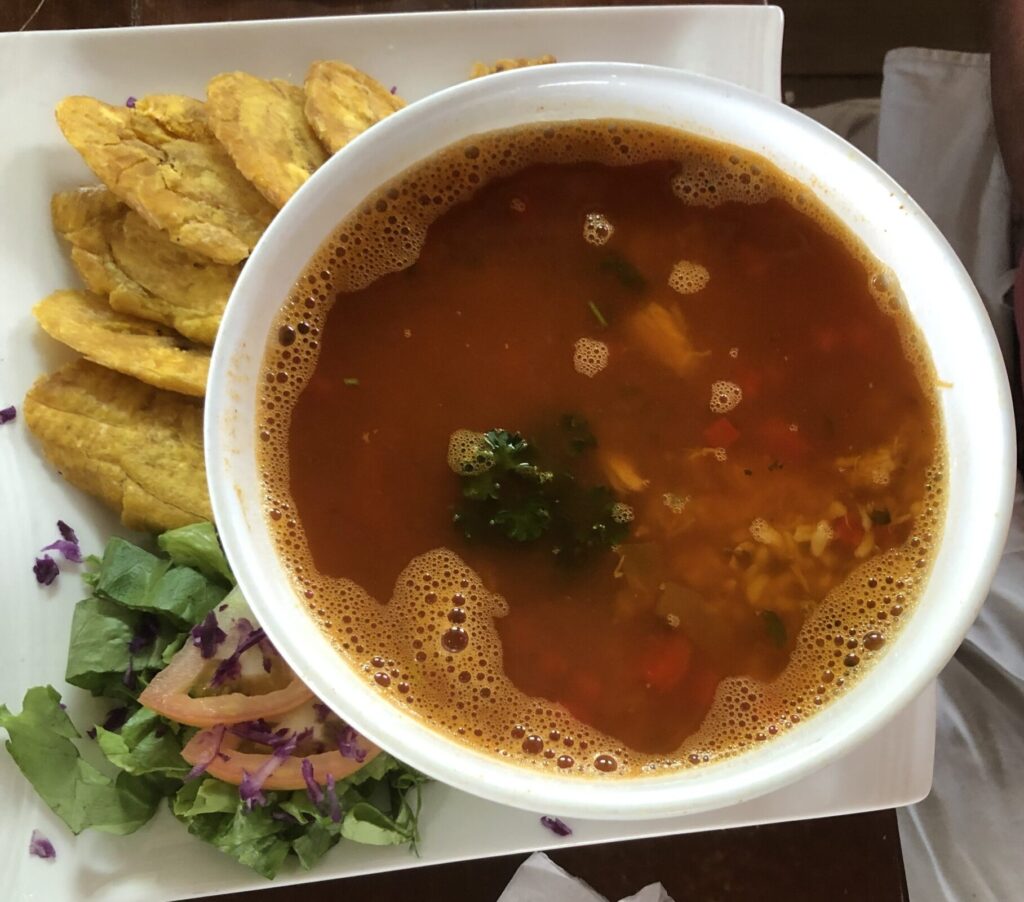Puerto Rico is a beautiful country with amazing food, culture and scuba diving. Learn about the best parts of this destination, dive into some helpful tips for traveling here, and find out what to expect when you first arrive. You will want to make sure to check out the many different beaches and restaurants while you're here-you won't be disappointed!
Puerto Rico History and Culture
Christopher Columbus landed on the island of Puerto Rico in 1493, which was then called Boriken by the native Tainos. The capital city San Juan is where you can find Old San Juan and most of the historical sites that are still around today. Many people like to go for a nice walk through the streets and take pictures at the landmarks, such as the San Cristobal castle.
Puerto Rico has a mixed population of Spanish, African, and Indigenous people so you'll find many different influences in the culture; for instance, it's not uncommon to see statues that are half white and half black which represent Taino Indians. People here are also very social; they love to talk to strangers and practice their English. It's a great place to meet locals!
Weather in Puerto Rico
The weather in Puerto Rico is very nice all year round, although the summers are hot and humid while the winters are milder. If you're planning to visit during the summer make sure to bring a big bottle of water with you as it can get pretty hot! Some of the nicest months to visit are from December-March when there is less humidity and the temperatures are mild.
Best Time Dive In Puerto Rico
The best time to scuba diving in Puerto Rico is in December-April, which are the coolest months. During these months you will also have less rain and wind so it's a great time of year for beginners.
If this is your first time scuba diving, it's important to take get your scuba certification beforehand. There are many dive company offers beginners course. It is easy and gives yourself some time to adjust. You have to learn how to use your equipment and make sure it's safe before you can get in the water, so plan on spending a few hours at each site that you dive.
Top 5 Dive Sites in Puerto Rico
Mona Island
It takes a 50-mile boat ride to get to this remote location where the Atlantic Ocean and the Caribbean Sea come together.
However, it's well worth the trip. It's comparable to diving in Galapagos Islands since there are so many unique and rare creatures; Mona shows the underwater world as it was millions of years ago. You can find sharks, rays, turtles, and all kinds of tropical fish like yellowtail snapper and mahi-mahi.
Mona is known for its macro life (small stuff), so bring your camera if you want to get those detailed pictures of tiny animals.
Candyland, Desecheo Island
One of the best dive sites in Puerto Rico, Candyland is a deep wall dive that starts from 90-100' and drops down to 300'. There are caves and small openings that you can swim into. If you're lucky, you might get to see a few sharks swimming by!
The name Candyland comes from all of the soft corals and sponges in the area. You can find lobsters, eels, crabs, sea turtles, and nurse sharks here. There is such a diversity of marine life here that you could dive into it every day for a week and see something new each time.
Do you remember playing a classic board game from your youth? Colorful coral mounds go down to 80 feet below the surface. They look like those from Candyland. The reef's kaleidoscopic beauty is captured in enormous sea fans, lettuce corals, and sponges.
Las Cuevas, Desecheo
This is for the people who can't get enough of swimming. This is your haven for those addicted to diving or snorkeling. Welcome to a place that has a lot of water. In this place, up to 20 people might explore at once. The reason is that there are canyons and arches.Take notice of the Darth Vader-like triangular windows. Las
Cuevas features caves and arches that you can swim through while swarms of colorful fish surround you.
Scuba diving Las Cuevas is probably the most educational experience I ever had in my life. Las Cueva is actually a submerged cave with an entrance to the open sea. The visibility inside Las Cueva is not great, but there is a large number of fish that inhabit Las Cuevas. Since Las Cuevas is a natural cave you will be able to see native tarpon, groupers, grunts, and many other Caribbean fishes. Also if you look closely inside Las Cuevas you might be lucky to find some lobster or maybe even octopus hiding in their caves.
Fallen Rock, La Parguera
Although it's about a 45-minute drive from La Parguera, it's one of the area's most popular dive sites. There is a little mountain in the rock. The top of the mountain is 65 feet high and the bottom of it is 130 feet down.
You'll find an abundance of colorful fish and sea turtles on the shallow end; it's a good spot for snorkelers, too.
Efra's Wall, La Parguera
This narrow valley is full of life. There are lots of different types of animals, like Gorgonians, whip corals, huge golden zoanthids and green finger sponges. Look for slipper lobsters, crabs, schooling black triggerfish (known locally as dungeons), creole wrasses and hawksbill turtles.
The wall begins from 90 feet to a maximum of 130 feet on the right side, with an average depth of 110 feet. Look for nurse sharks resting under overhangs as you glide along Efra's Wall. You can expect large schools of bigeye jacks and horse-eye jacks.
Getting Around Puerto Rico
If you're traveling to other parts of the island like San Juan, it's best to take a taxi or rent a car. You can also use public transportation, but there aren't many options if you plan on exploring the whole island so your easiest option is to get an Uber or taxi.
Beaches in Puerto Rico
Puerto Rico has beautiful beaches that you will want to see! Whether you're looking for a relaxing day at the beach or something more active like surfing, you can find it here. The waves are strong and a lot of people have gotten injured due to them so it's always best to ask
Water temperature in Puerto Rico
The water temperature in Puerto Rico is great for scuba diving. You can expect the temperature to be from 70-78 degrees Fahrenheit (21-26 degrees Celsius) between December and April, while summer months have a range of 82-88 degrees Fahrenheit (28-31 degrees Celsius).
 Currency and foods in Puerto Rico
Currency and foods in Puerto Rico
The currency of Puerto Rico is the US dollar, so be sure to carry cash with you. There are plenty of delicious things to eat here-for example, you'll find a lot of restaurants serving traditional Caribbean dishes like mofongo or arroz con pollo (chicken and rice). Other local favorites include picadillo (ground beef), sancocho (meat and vegetable soup with plantains), and alcapurrias (beef-filled yucca fritters). It's also not uncommon to have rice and beans as a side dish.
Language
Spanish is the official language of Puerto Rico so it's best to learn some before you go. Many people here also know English, especially older generations-but learning a few key phrases in Spanish will help you make friends with locals and might even get you better service at restaurants!
Conclusion
Puerto Rico is a beautiful island full of diverse cultures and history, which makes it an ideal destination for travelers looking to explore something new. Whether you’re interested in diving or exploring the beaches, we hope this blog post has inspired you to visit!
Though there are many sites that offer tours all around the Island, here are our top five dive spots as well as where some great beach time can be had. We also included information about currency and foods typically eaten on the Island so make sure to take note before your trip.
If you speak Spanish fluently (or at least have been studying), then communicating with locals should not be too difficult. However if English is more up your alley!
 At Ocean Buddy we love all things water. In fact, our passions are so strong we have made it our mission to personally help as many people as possible to get the right gear in order to have the best day out in the water as possible.
At Ocean Buddy we love all things water. In fact, our passions are so strong we have made it our mission to personally help as many people as possible to get the right gear in order to have the best day out in the water as possible.


No comments:
Post a Comment